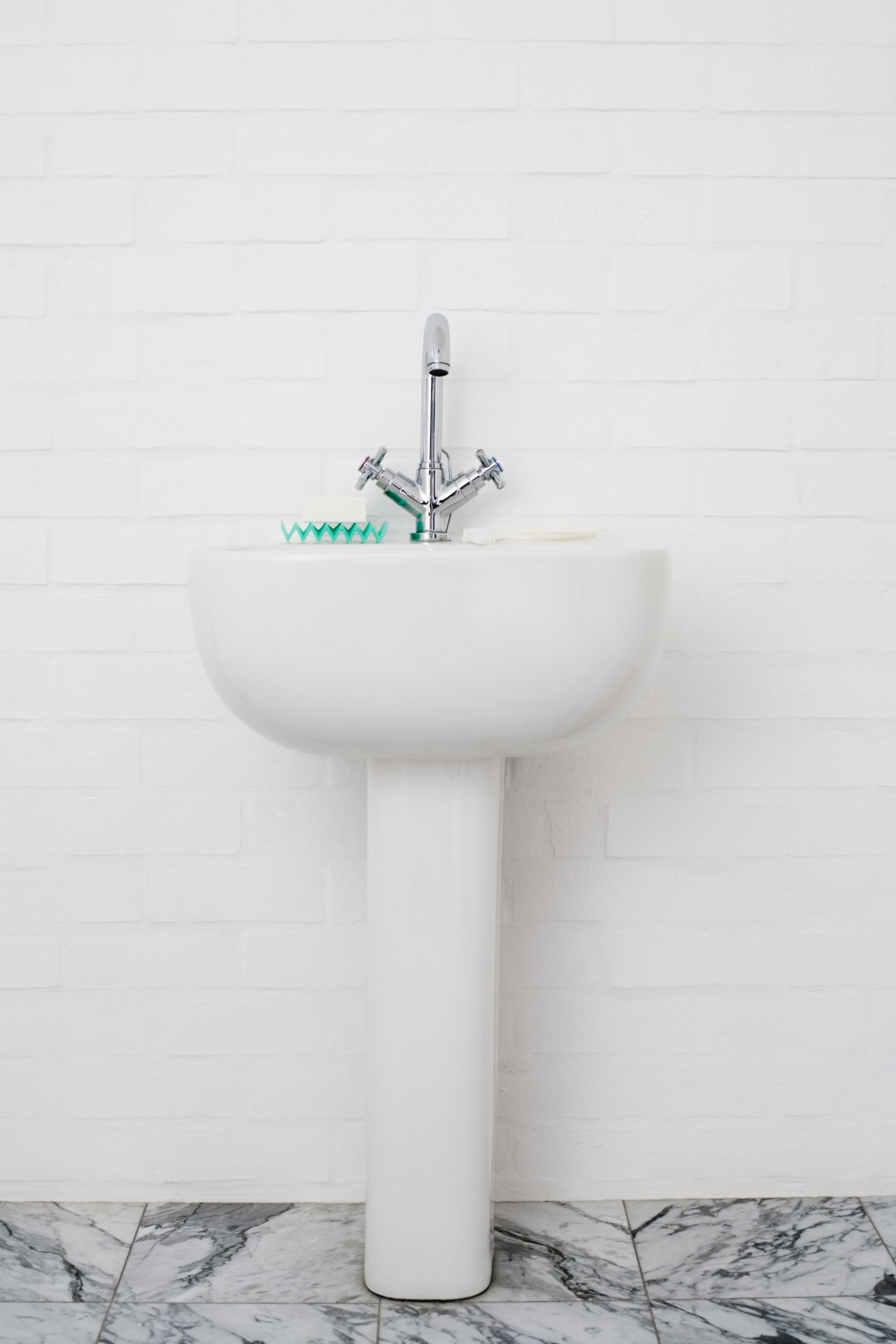Replacing the kitchen sink drain lock nut may seem like a daunting task, but with the right tools and a little bit of know-how, it can be a simple and straightforward process. The lock nut is an important component of your kitchen sink drain, as it helps to secure the drain basket in place and prevent leaks. If you notice any damage or wear and tear on the lock nut, it's important to replace it as soon as possible to avoid any further issues. In this article, we will discuss the steps involved in replacing a kitchen sink drain lock nut.How to Replace a Kitchen Sink Drain Lock Nut
Before you begin, it's important to gather all the necessary tools and materials for the job. You will need a pair of pliers, a pipe wrench, a screwdriver, and a replacement lock nut. It's also a good idea to have a bucket or container nearby to catch any water that may come out of the drain during the process.Step 1: Gather the Necessary Tools
Before you can start working on the drain, you need to turn off the water supply. Underneath the sink, you will find two valves - one for hot water and one for cold water. Turn both of these valves clockwise to shut off the water supply.Step 2: Turn off the Water Supply
Next, you will need to remove the drain basket from the sink. To do this, use a pair of pliers to loosen the lock nut that holds the drain basket in place. Once the lock nut is loose, you should be able to pull the drain basket out of the sink.Step 3: Remove the Drain Basket
With the drain basket removed, you can now access the old lock nut. Using a pipe wrench, loosen and remove the old lock nut from the drain pipe. Be careful not to damage the pipe as you remove the nut.Step 4: Remove the Old Lock Nut
Once the old lock nut is removed, take the time to clean the area around the drain pipe. Remove any debris or buildup that may be present to ensure a clean and smooth surface for the new lock nut to be installed.Step 5: Clean the Area
Take the new lock nut and place it onto the drain pipe. Using a pipe wrench, tighten the lock nut onto the pipe until it is secure. Make sure not to over-tighten the nut, as this can cause damage to the pipe.Step 6: Install the New Lock Nut
Now that the new lock nut is in place, you can reattach the drain basket. Place the basket back into the sink and use a pair of pliers to tighten the lock nut and secure it in place.Step 7: Reinstall the Drain Basket
With the new lock nut installed and the drain basket back in place, you can now turn the water supply back on. Turn both valves counterclockwise to restore the water flow to your sink.Step 8: Turn the Water Supply Back On
Finally, it's important to test for any leaks after replacing the lock nut. Run some water through the sink and check for any signs of water leakage. If you notice any leaks, tighten the lock nut a little more until the leak stops.Step 9: Test for Leaks
Why Replacing Your Kitchen Sink Drain Lock Nut is Important for Your House Design

The Role of a Kitchen Sink Drain Lock Nut in Your House Design
 The kitchen sink is an essential part of any house, and its design can greatly impact the overall aesthetic and functionality of your kitchen. While many homeowners focus on choosing the right sink and faucet, they often overlook the importance of the
kitchen sink drain lock nut
. This small but crucial component plays a significant role in keeping your sink in place and preventing leaks. In this article, we will discuss the importance of
replacing
your
kitchen sink drain lock nut
and how it can improve your house design.
The kitchen sink is an essential part of any house, and its design can greatly impact the overall aesthetic and functionality of your kitchen. While many homeowners focus on choosing the right sink and faucet, they often overlook the importance of the
kitchen sink drain lock nut
. This small but crucial component plays a significant role in keeping your sink in place and preventing leaks. In this article, we will discuss the importance of
replacing
your
kitchen sink drain lock nut
and how it can improve your house design.
Prevents Leaks and Water Damage
 One of the main reasons why it is important to
replace
your
kitchen sink drain lock nut
is to prevent leaks and water damage. Over time, the lock nut can become loose or damaged, causing water to seep through and potentially cause mold and mildew growth. This not only affects the appearance of your kitchen but can also lead to costly repairs. By regularly replacing your lock nut, you can ensure that your sink is securely in place and prevent any water damage to your house.
One of the main reasons why it is important to
replace
your
kitchen sink drain lock nut
is to prevent leaks and water damage. Over time, the lock nut can become loose or damaged, causing water to seep through and potentially cause mold and mildew growth. This not only affects the appearance of your kitchen but can also lead to costly repairs. By regularly replacing your lock nut, you can ensure that your sink is securely in place and prevent any water damage to your house.
Improves Aesthetic Appeal
 In addition to its functional importance, the
kitchen sink drain lock nut
also plays a role in the aesthetic appeal of your kitchen. An old or damaged lock nut can make your sink look outdated and unappealing. By replacing it with a new one, you can instantly give your sink a fresh and updated look, making your kitchen more visually appealing.
In addition to its functional importance, the
kitchen sink drain lock nut
also plays a role in the aesthetic appeal of your kitchen. An old or damaged lock nut can make your sink look outdated and unappealing. By replacing it with a new one, you can instantly give your sink a fresh and updated look, making your kitchen more visually appealing.
Ensures Proper Functionality
 A loose or damaged lock nut can also affect the functionality of your kitchen sink. It can cause the sink to shift or move, making it difficult to use. This can be especially problematic if you have a garbage disposal attached to your sink. By
replacing
your
kitchen sink drain lock nut
, you can ensure that your sink is securely in place, allowing for smooth and efficient use.
A loose or damaged lock nut can also affect the functionality of your kitchen sink. It can cause the sink to shift or move, making it difficult to use. This can be especially problematic if you have a garbage disposal attached to your sink. By
replacing
your
kitchen sink drain lock nut
, you can ensure that your sink is securely in place, allowing for smooth and efficient use.
Conclusion
/how-to-install-a-sink-drain-2718789-hero-b5b99f72b5a24bb2ae8364e60539cece.jpg) In conclusion, the
kitchen sink drain lock nut
may be a small and often overlooked component, but its importance in your house design cannot be underestimated. By regularly replacing it, you can prevent leaks and water damage, improve the aesthetic appeal of your kitchen, and ensure proper functionality of your sink. Don't underestimate the impact of this small but crucial part and make sure to include it in your house design maintenance checklist.
In conclusion, the
kitchen sink drain lock nut
may be a small and often overlooked component, but its importance in your house design cannot be underestimated. By regularly replacing it, you can prevent leaks and water damage, improve the aesthetic appeal of your kitchen, and ensure proper functionality of your sink. Don't underestimate the impact of this small but crucial part and make sure to include it in your house design maintenance checklist.



















